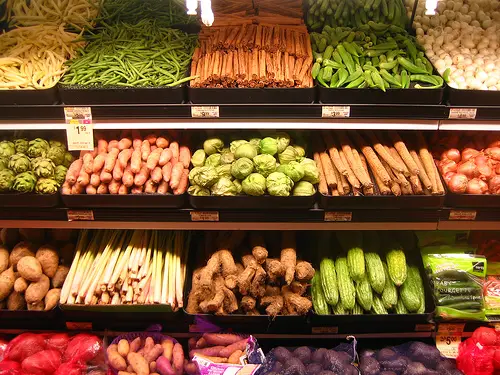 It’s a no brainer: if you want to be healthy you’d have to eat more fruit and vegetables — but there’s a caveat. Pesticide residue that’s left on produce can lead to a variety of ailments over the long term. Pesticides can accumulate inside the body in a process known as bioaccumulation; the risk increases when you consume lots of raw produce that isn’t washed properly.
It’s a no brainer: if you want to be healthy you’d have to eat more fruit and vegetables — but there’s a caveat. Pesticide residue that’s left on produce can lead to a variety of ailments over the long term. Pesticides can accumulate inside the body in a process known as bioaccumulation; the risk increases when you consume lots of raw produce that isn’t washed properly.
Of course, not all conventionally grown fruits and vegetables have the same amount of pesticide residue — some are significantly cleaner than others — which means you can save money by avoiding the unnecessary premiums commanded by some organic fruits and vegetables.
That’s not all, many folks are wary of genetically modified (GM) fruits and vegetables; they worry that GM crops increase our risk of allergies, antibiotic-resistance, and cancer. Thankfully, there is an extremely simple way to know whether the fruits and veggies on your grocer’s shelf is conventionally grown, organic, or genetically modified. The following infographic explains how anybody can quickly identify GM foods at a glance, as well as a few other tips including the best places to buy organic produce at a discount.
Photo Credit: rick; Infographic: Juicing with G


That’s a great chart! I try to buy organic produce as often as possible, but sometimes I have a hard time finding an organic version of what I need. But, I do always find organic apples and salad greens.
Having genetically modified produce be labeled with a code starting with an 8 was a concept that has never gone into use. If you Google it and read about it, you will see there is no evidence any produce has ever actually been labeled with a code starting with an 8.
The use of those five-digit codes is the international standard (the four-digit codes you see are actually five-digit codes that simply drop the initial 0 for convenience) — but they are not mandatory. In theory, you can also avoid GM produce by looking for fruits and veggies certified by the USDA as “100% organic” — but there are some dubious loopholes with that method too.
I am a bit alarmed because I eat apples like everyday. So I’d go for organic and wash it really well to wash pesticide off. Thanks for the list!
It’s so hard to tell these days whether a food is good or bad for you. The food industry has so many tricks on making you think something is good for you. =( It’s getting harder every year!
Anyone with a small suburban lot can grow a lot of their own produce organically. We eat a variety of our own pesticide and petroleum based fertilizer free crops from early May (spinach, radishes, kale, lettuce, turnips, kohlrabi, rhubarb) through summer (tomatoes, sweet peppers, okra, eggplant, squash, potatoes, sweet corn) and into the autumn with the second planting of spinach, Swiss chard, lettuce, kale, and other cold crops. There’s also grapes in season, apples from dwarf trees, gooseberries, chestnuts and plums. You don’t need a large garden, you can grow a lot of organic produce in a 10′ by 10′ space. Tomato production gotten out of hand? Put whole tomatoes into the freezer and they freeze into wonderful round rock hard objects like red billiard balls. When you need tomatoes for cooking in winter you set out as many as you need in a bowl a few hours before cooking and when you’re ready, pluck out the stem scar and they’re ready to throw in the pot, skin and all. Too many sweet peppers? Cut them up into small bits and freeze, in winter when it’s time for a stir fry, you pull out as many as you need and use them as is. Don’t have a patch of earth? Maybe you could garden in a friend’s yard and split the produce with them. You don’t always have to spend money to get organic. Gardening is good exercise and you can skip that expensive gym membership if you’re working your garden.
Thanks for the great tips, Karen! (Especially on the tomatoes.)